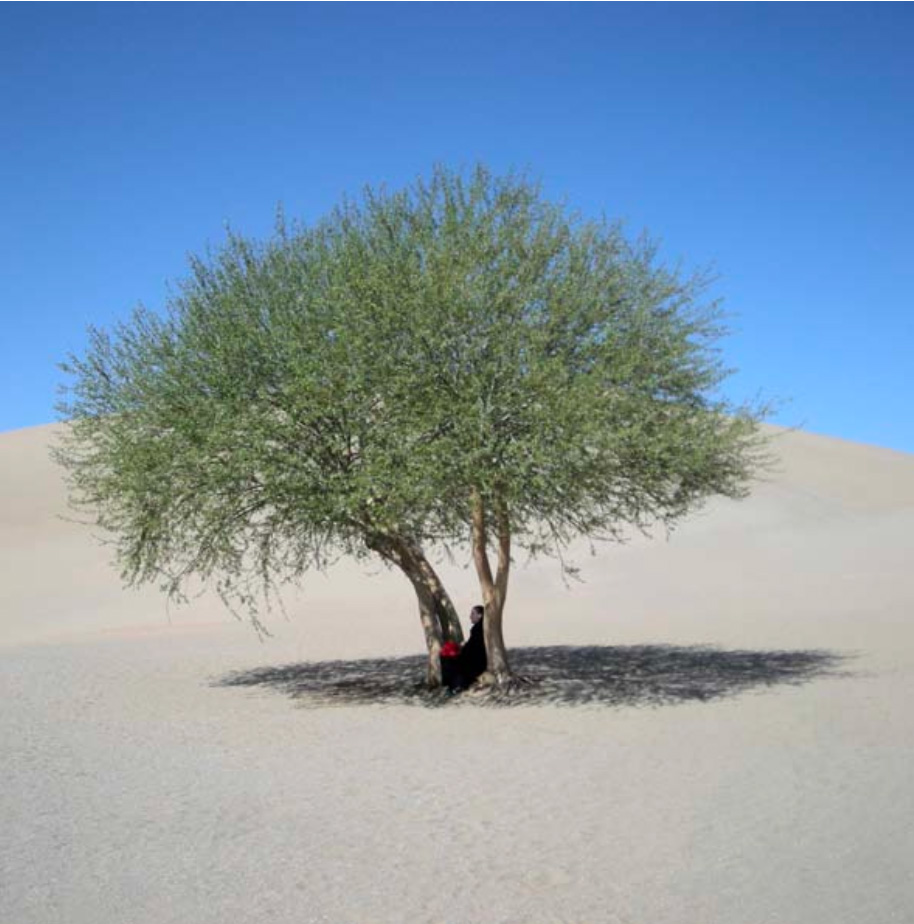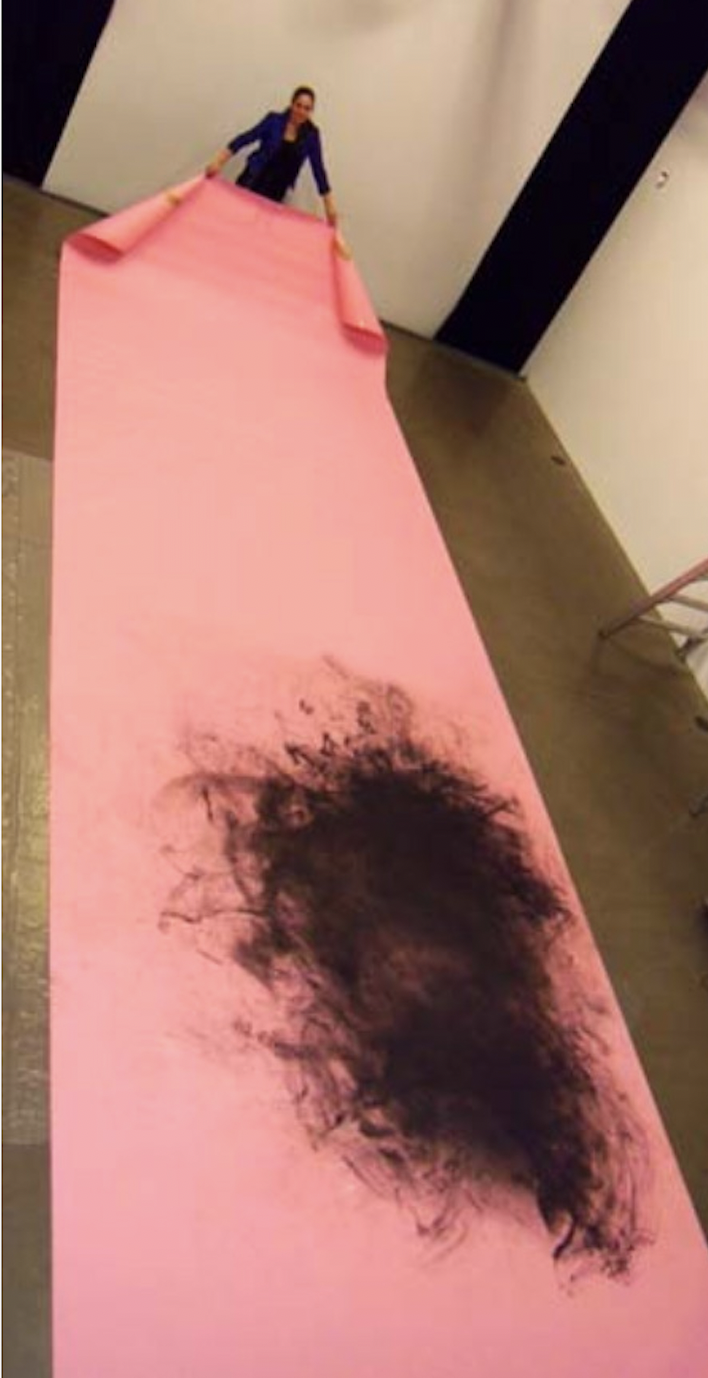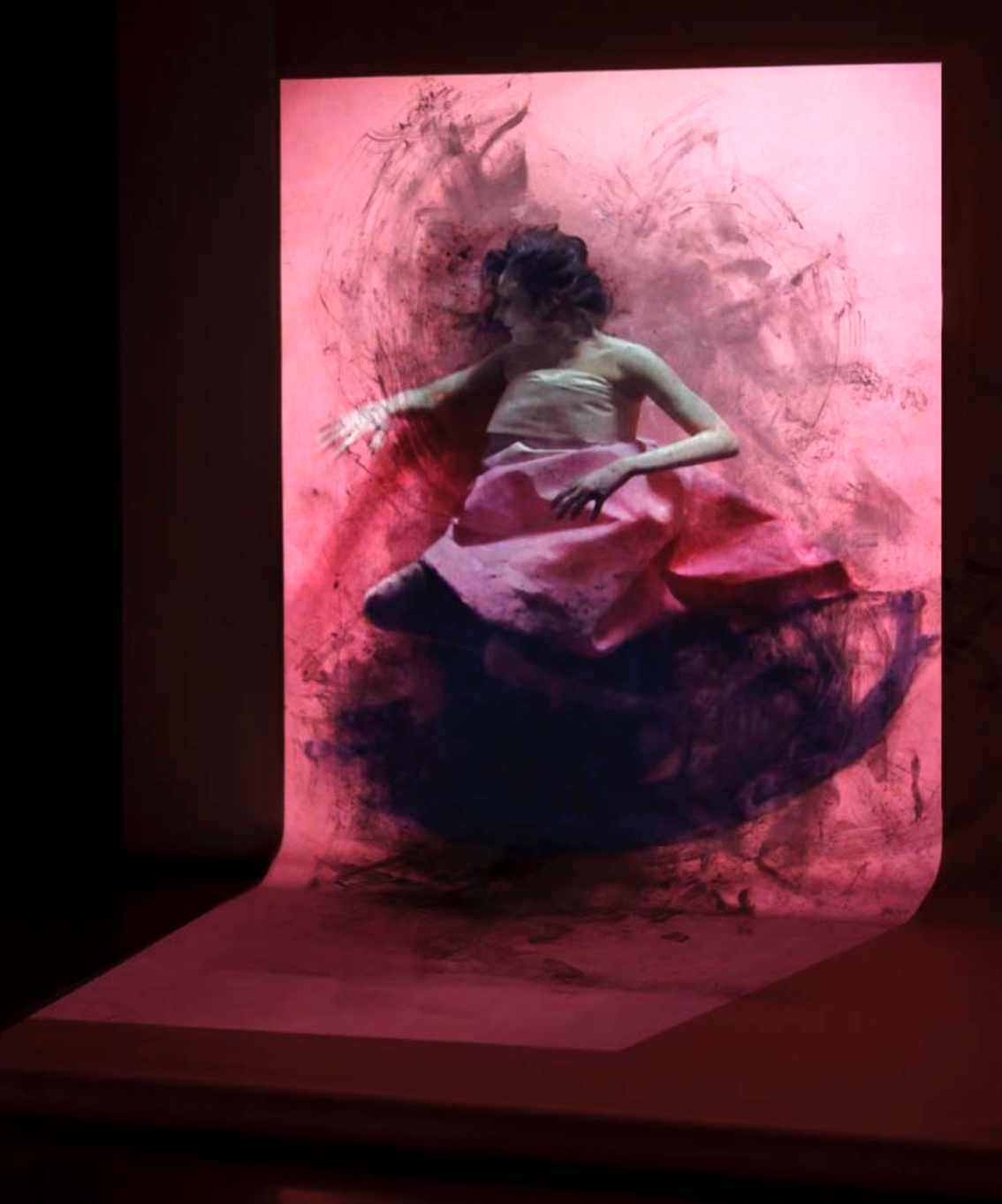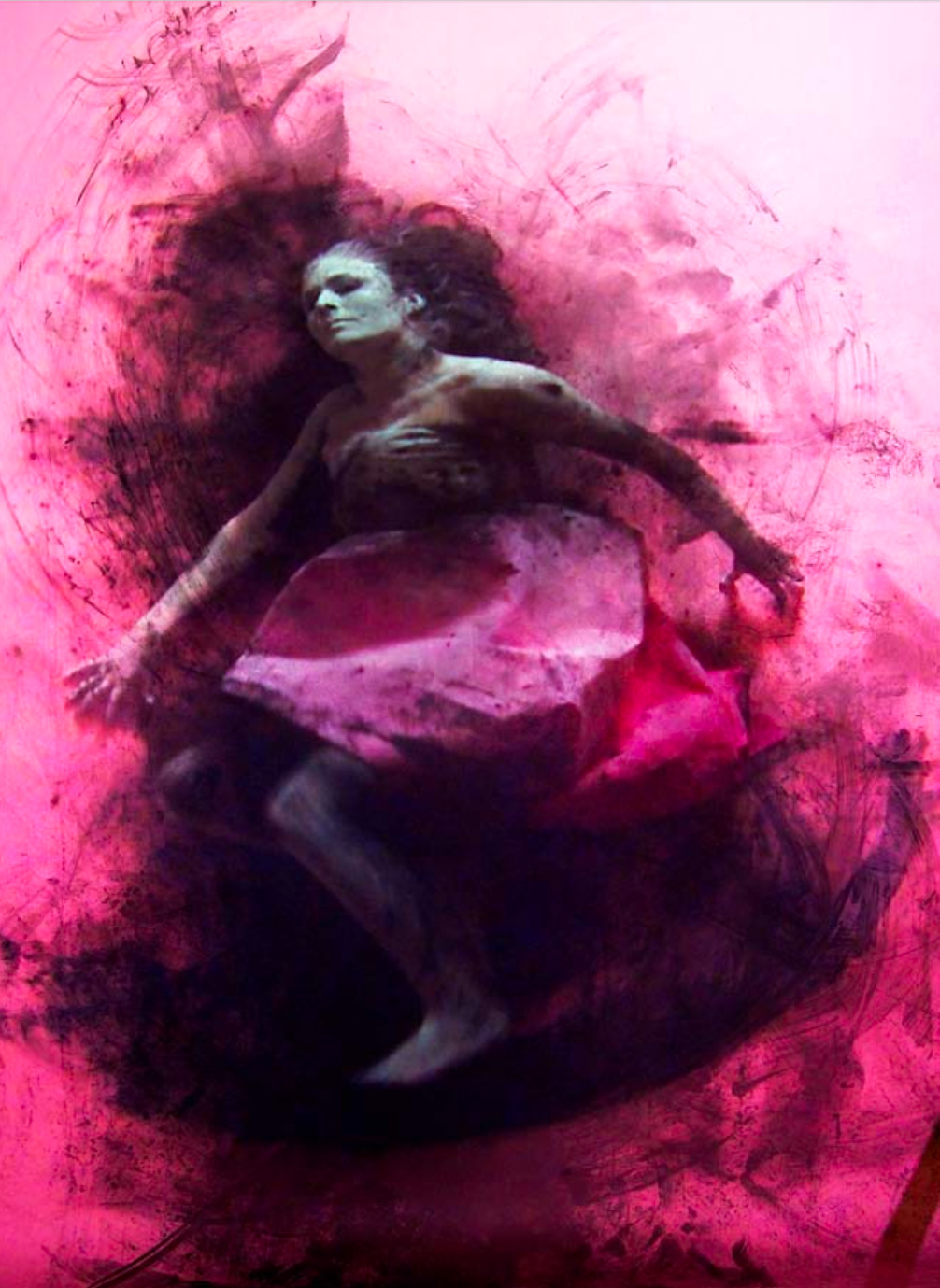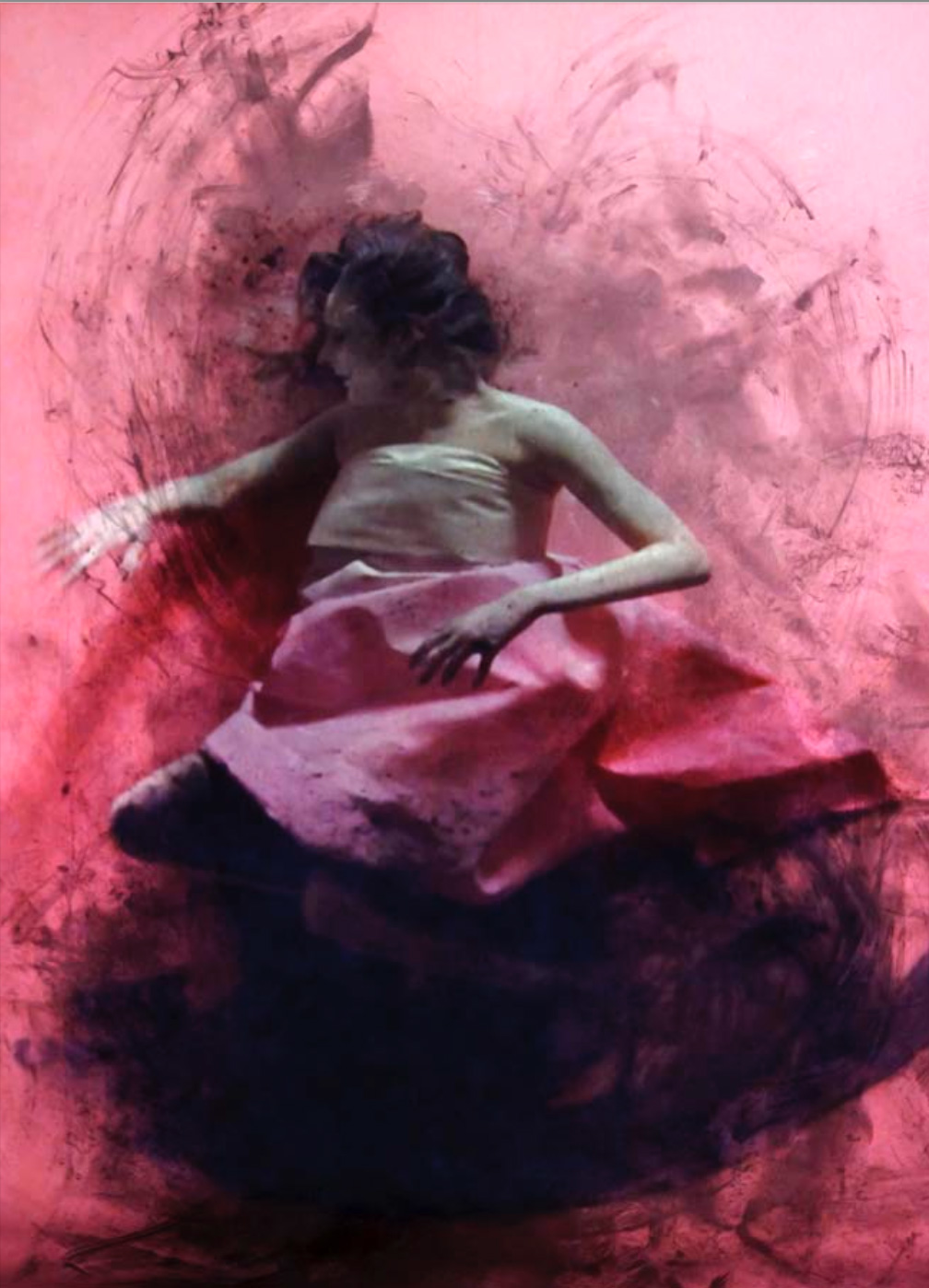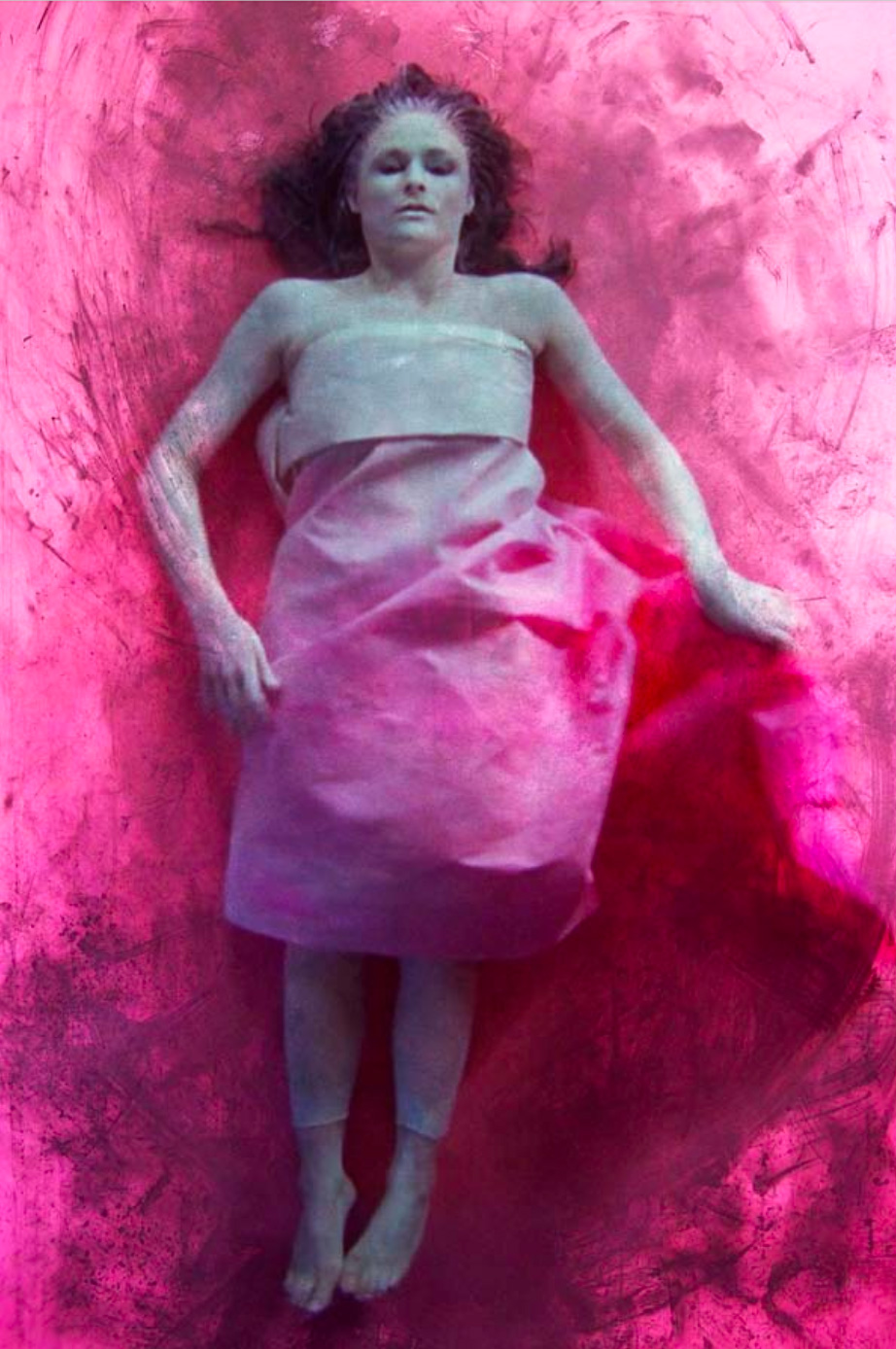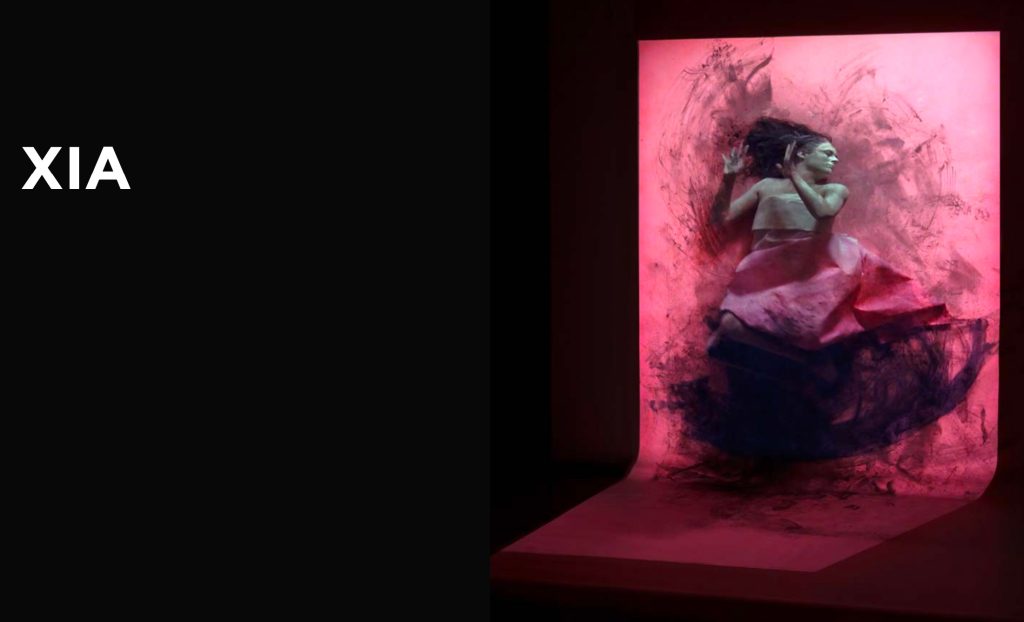
XIA, Responsive Art System. (Immersive environment; responsive video membrane; interactive narrative; sensing and control system; large scale projection; virtual character; recorded performance; and digital sound)
Visitor’s presence triggers different emotional stages of a projected virtual character. In a darkened gallery space, on a luscious, luminous carnation ground, a velvety black charcoal bloom – like the dusky, polleny heart of a poppy – is both the setting and the trace of a captive’s struggle. For the XIA System (2011), I developped a responsive membrane specially designed to produce a three-dimensional (3D) space for the moving images to float in the environment. Every details of the membrane, such as color, format, texture, setting, and shape, were selected to elicit multisensory manifestations. As Rebecca Hiscott mentioned in her review on XIA, “The figure seems to protrude from the backdrop due to layered HD video, which creates a shockingly three-dimensional holographic effect.”1 In this interactive installation, the performance was drawn from research into the sensory responses to experiences that I associated with “captivity”. Over a ten-month period, I filmed sequences of selected movement numerous times. I edited them separately and directly on the designed video membrane until I found the specific lighting and body movement that projected the desired effects, which combines a sublime moment filled with fear and torment, with periods of calm and total serenity. As the Art Historian, Alison Syme, described “Legs scrabble; head and arms jerk mechanically; hands reach out to either side as if to ward off something or someone sensed but unseen. But even as she writhes, slowly turns, or curls up into a fetal position, the near-weightless being remains trapped in her flowery prison.” 2
1. Rebecca Hiscott. Between Darkness and Light | Anima Shares the Vision of Ana Mendieta, The Link. Sept.13, 2011
2. Alison Syme, “PHILOMÈNE LONGPRÉ”. Isomorphism Magazine, Art Interdisciplinary Field. March 2012, pp.60-66.
The Various Contrivances of Philomène Longpré
by Alison Syme
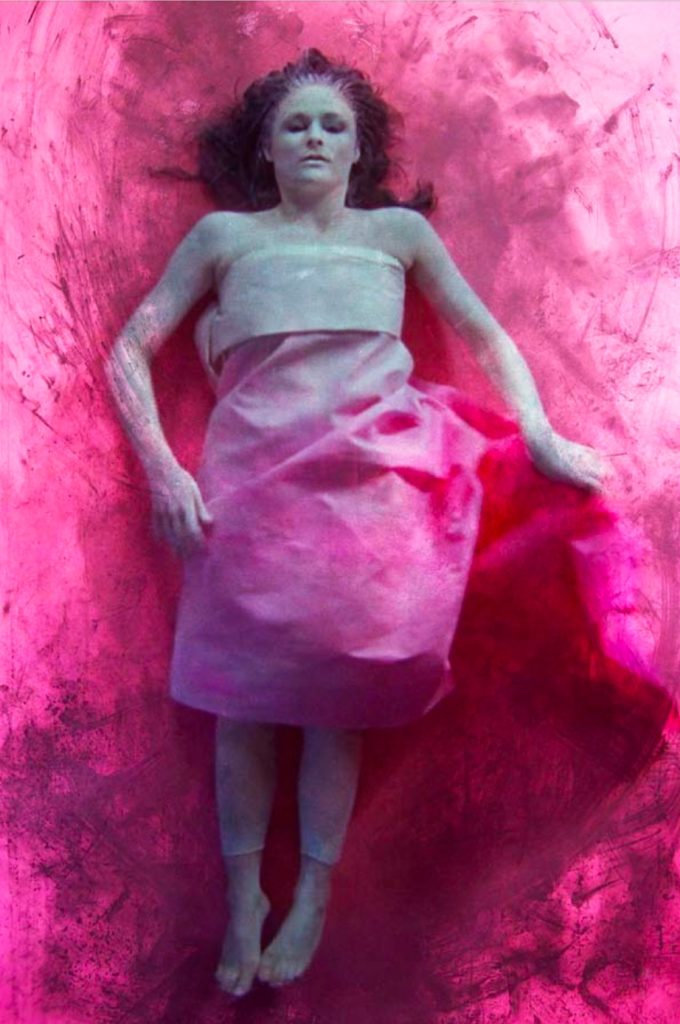
Xia’s orchidaceous contrivance is not anomalous in Longpré’s oeuvre: her other video systems also stage natural historical allegories. In Formica (Latin for ant), a tethered red figure writhes as more and more shiny lashes bind it in place. In Octopus, we encounter a grey-sheathed creature gradually ensnared by sticky, white, tentacular filaments. The figure is projected onto a mobile screen composed of dangling, transparent ribbons. As its struggle to free itself reaches a climax, the screen itself starts to move, swaying like seaweed in a strong current; creature and environment dance together as the figure shakes itself free only to become tangled once more. Most relevant to our understanding of Xia is Cereus, named after a large, night-blooming cactus. The Cereus installation takes the form of a large but delicate transparent flower. Its petals slowly open as visitors approach; they are also the membranes onto which the image of a miniature figure is projected. In its pellucid floral prison, this character is a mirror image of the viewer: Longpré has compared visitors to Cereus to the sphinx moths that are drawn to the nocturnal blossom. What is the nature of perception, of our susceptibility to sensorial wiles? Elaine Scarry has examined the imaginative consequences of the “antecedents of human perception in the membranes of plants;” she describes the way petals function imaginarily as figures of the “mental retina” on which images are formed for us.1 Cereus offers us such a floral model of perception, one in which the viewer’s own capture is foregrounded. Drawn to the beauty of the strange blossom and riveted by the ephemeral figure seen on a fragile membrane, the viewer is captured, like a pollinator, by the flower’s contrivances. Perception of the visual field inevitably entails recognition of that field as a trap, full of lures. But Longpré’s works are not pure nature poetry; on the contrary, her sophisticated, sensitive systems are technologically driven. She describes Cereus as “a robotic structure driven by pneumatic actuators;” at its heart is a laser projection device. Reed switches activate the kinetic structure of Octopus. Xia incorporates infrared and ultrasonic sensors to detect the presence, position, and sounds of visitors; the illusion of the fairy’s three-dimensionality is created by layering HD video to create a holographic effect. The cyborg scenes Longpré orchestrates not only draw us into the visual field but also inculcate awareness of the mediated conditions of perception itself, of our immersion in an environment in which nature and artifice are inseparable.
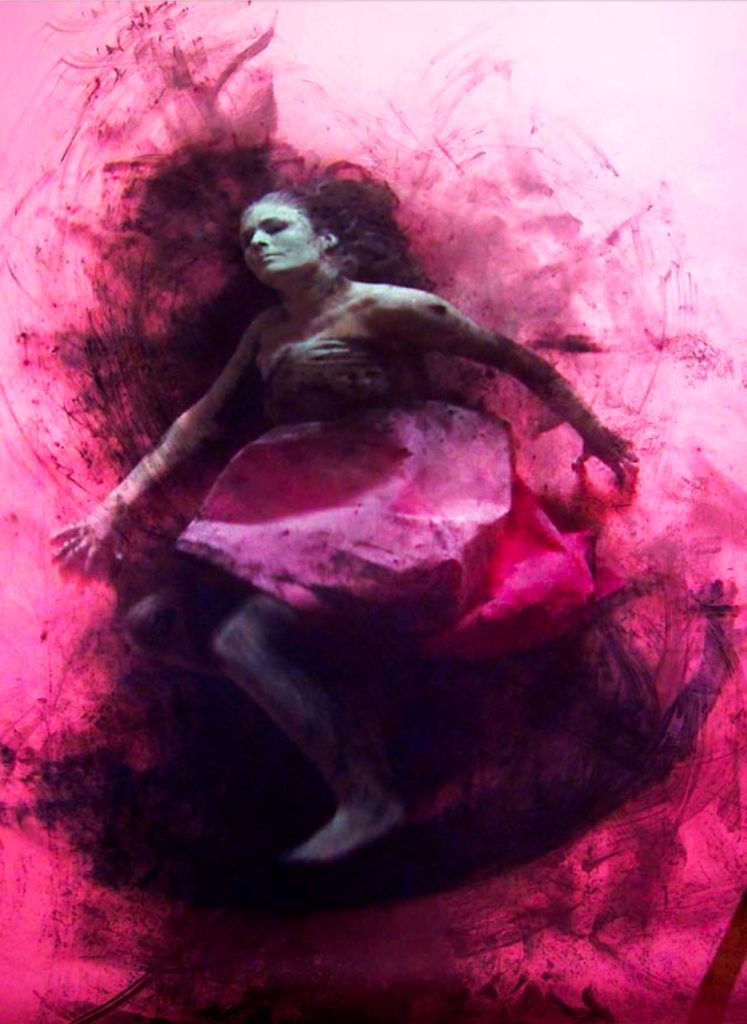
The artist’s conceits are medium-specific. In Octopus classic film is the snare: the greyish submarine figure is projected in black and white on the strippy screen, accompanied by the sounds of sped-up film reels and the clicks of projection. The grey-scale image suggests the muted colouration of the underwater realm and the temporal depths of old cinema, while the luminous filaments ensnaring the figure, like light spots on damaged celluloid, threaten not only the character but the narrative with break-up. In Xia the paper screen and lush charcoal are both vegetable substances. The carnation ground unfurls onto the gallery floor, tempting the viewer to step into the floral trap. The viewer’s condition is like that of the projected figure who, flitting and wallowing in her powdery lair, is ethereal fairy and mud-painted native, Ariel and Caliban at once. Drawn to both the dream of flight and the gorgeous colour, we are caught in nets of light and stained with our own desire.
1 Elaine Scarry, Dreaming by the Book (New York: Farrar, Strauss, and Giroux, 1999), 68, 49.
Alison Syme | Alison Syme is Associate Professor of Modern Art at the University of Toronto. She received her Ph.D. from Harvard University in 2005. Syme is also the author of A Touch of Blossom: John Singer Sargent and the Queer Flora of Fin-de-Siècle Art (Penn State University Press, 2010).
Exhibitions
- Anima, curated by Christine Redfern, Gallery FOFA, Montreal, Quebec, Canada, September 6 – October 7, 2011.
http://fofagallery.concordia.ca/ehtml/PhilomeneLongpre.htm - Body Tracks, curated by Christine Redfern and Mireille Bourgeois, Gallery 101 and SAW Video Gallery, Ottawa, Ontario, Canada, Jun 10 2011 – Jul 9, 2011.
http://www.g101.ca/exhibits/body-tracks - Body Tracks, curated by Christine Redfern, MSVU Art Gallery, Halifax, NB, Canada, 24 Mar 2012 – 13 May, 2012.
http://msvuart.ca/index.php?menid=02&mtyp=17&article_id=400
Reviews
- Isa Tousignant’s Top 3: Into the Deeps by Isa Tousignant.
Canadian Art Magazine. Dec. 2011
http://www.canadianart.ca/online/features/2011/12/22/isa_tousignant_top_3/ - Between Darkness and Light | Anima Shares the Vision of Ana Mendieta by Rebecca Hiscott. The Link. Sept.13, 2011
http://thelinknewspaper.ca/article/1710 - Layoffs & Caravaggio at the National Gallery | Body Tracks at Gallery 101
by ANDREW WRIGHT. Ottawa, Akimbo, June 21st, 2011
http://www.akimbo.ca/exhibitions/?id=30710 - Mattes, Cathy and Christine Redfern. “Body Tracks/Traces du Corps”. 2012, 40p.,
Gallery 101, ISBN 978-1-8996183-50-3 - Sobol, John. “Reviews Body Tracks with specific attention given to the graphic novel Qui est Ana Mendieta?/Who Is Ana Mendieta?” Canadian Art, Reviews, July 21, 2011.
http://www.canadianart.ca/reviews/2011/07/21/ana_mendieta/ - Ionescu Titu, Alexandra. “PHILOMÈNE LONGPRÉ”. Isomorphism Magazine, Art Interdisciplinary Field. March 2012, pp.60-66.
https://www.philox.net/wp-content/uploads/Philomene_Longpre_Isomorphism.pdf - Driving Creativity, Artengine blog: Art and Technological Experimentation. Moving among moving images: Philomène Longpré’s Xia
by Jaenine Parkinson. August 5th, 2011.
http://artengine.ca/blog/?p=2448 - Wright, Andrew. “Layoffs & Caravaggio at the National Gallery and Body Tracks at Gallery 101″
Ottawa, Akimbo, June 21st, 2011.
http://www.andrewwright.ca/andrewwright/my-latest-akimblog-post-from-ottawa - The Various Contrivances of Philomène Longpré by Alison Syme. August, 2011.
Photo library (click to expand)
